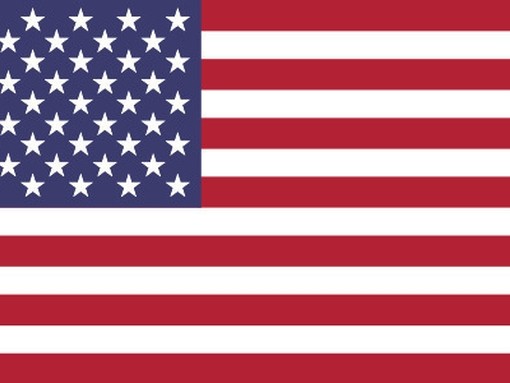Brazil
Intro
Travellers from Brazil made 9.8 million outbound visits in 2023, with a total international tourism expenditure of US$14.5 billion.
In 2023, the UK welcomed a record 344,000 visits from Brazil. During the travellers’ visits, their total expenditure was a record £425.4 million, with an average spend of £1,237 per visit.
Discover visitor behaviour, travel trade insights, detailed data visualisations for this market – and more. The statistics in this market report are collated from a range of sources such as the Office for National Statistics (ONS), as well as sponsored questions and our own research. For further details, see How we source this information.
Visitor characteristics
- The largest proportion of Brazilian visitors who come to the UK reside in São Paulo (47%) and Rio de Janeiro (14%).
- Over half of Brazilian visitors to the UK in 2023 were aged 25 to 44 years (56%) compared to the overall market average of 44%.
- The majority of visitors are making their first trip to the UK.
- 91% of visiting Brazilians say they are ‘extremely’ likely to recommend Britain for a holiday.
Popular activities for this market
Dining in a restaurant.
Sightseeing of famous buildings and monuments.
Going shopping.
Explore the inbound data in full
Use our visualisations to see data from this market in greater depth and clarity. Compare annual statistics, and filter by age group, gender, trip duration and more. It includes seasonality, trip purpose and regional spread of visitors to UK destinations. This data is based on the International Passenger Survey, conducted by the Office for National Statistics (ONS).
Perceptions of Britain in the Brazilian market
- Britain is the 8th strongest nation brand among 60 nations according to Brazilians.
- Brazilians rate Britain highest for contemporary culture and vibrant cities, but less so for natural beauty.
- Films, museums, and music are the cultural products that are most strongly associated with Britain among Brazilians.
- Words associated with Britain by Brazilians include ‘fascinating’, ‘educational’ and ‘exciting’.
Global context
Top-level statistics relating to the population, GDP, tourism expenditure and popular destinations for this market. For greater detail on inbound tourism flows from this market to the UK, see our data visualisations.
| Measure | 2023 |
| International tourism expenditure (US$bn) | 14.5 |
| Global rank for international tourism expenditure | 25 |
| Number of outbound visits (m) | 9.8 |
| Most visited destination | USA |
| Most visited destination in Western Europe | Portugal |
Key demographic and economic data
| Measure | 2023 |
| Population (m) | 216 |
| GDP per capita PPP (US$) | 18,875 |
| Annual average GDP growth over past decade (%) | 0.5 |
| Annual GDP growth (%) | 2.9 |
Caring for visitors
- Portuguese is the official language of Brazil. Approximately 5% of the population speaks English.
- Brazilians appreciate having spacious hotel rooms with storage space. They tend to travel with numerous pieces of large luggage. Also, ultra-clean rooms are crucial for guest satisfaction, paired with a preference for rooms without carpeted floors and bathrooms where the shower is separated from the bathtub.
- Brazilians expect breakfast to be included with their hotel stay. Preference is for a light breakfast, from a buffet setting.
- Brazilians appreciate tourism products and services that offer Portuguese-speaking staff or language options. It is not customary to tip in Brazil.
The leisure and travel trade
- The highest concentrations of travel trade can be found in São Paulo. Rio de Janeiro’s travel trade community has decreased since the 2016 recession. Curitiba, Porto Alegre in Brazil’s south, and Belo Horizonte in Brazil’s southeast are also important cities home to key travel trade partners.
- October to January is a key period when Brazilians plan and book travel for the year ahead. April to June is also another busy period.
- Personal relationships are key to business success in Brazil.
- Brazil’s travel trade has been consolidating, with a few large tour operator holding companies overseeing multiple brands – such as CVC Corp.
Access to Britain from Brazil
The key routes and transport modes that connect this market with the UK.
| Measure | 2023 |
| Weekly aircraft departures | 19 |
| Weekly seat capacity | 6,402 |
| Airports with direct routes in Brazil | 2 |
| Airports with direct routes in Britain | 1 |
- 81% of Brazilian visits arrive in Britain by plane, 10% arrive via the Channel Tunnel and 9% via sea (2023).
- In 2023, British Airways and LATAM Airlines provided direct non-stop flights between Brazil and Great Britain.
- São Paulo and Rio de Janeiro share 81% and 19% of Brazilian seat capacity to the UK in 2023, respectively.
- Following the COVID-19 pandemic, scheduled seat capacity on non-stop flights from Brazil to the UK has recovered to 87% of 2019 levels in 2023.
- Departing visitors from Brazil travelling home by air are charged £88 in Air Passenger Duty if travelling in economy class.
Further resources
Brazil Market Snapshot.pdf
Brazil Market Snapshot
Brazil market & trade profile.pdf
Brazil market & trade profile
Brazil aviation profile.pdf
Brazil aviation profile
Brazil COVID Sentiment Tracker.pdf
Brazil COVID Sentiment Tracker
Where visitors from Brazil to the UK reside in their own country.xlsx
Where visitors from Brazil to the UK reside in their own country
Perceived barriers to exploring Britain outside London for Brazilians.pdf
Examine the perceived barriers to exploring Britain outside London for Brazilians.
Leveraging Britain’s culture in China, Brazil & Italy.pdf
Leveraging Britain’s culture in China, Brazil & Italy
Where visitors from Brazil to the UK reside in their own country.xlsx
Data showing area of residence for visits made from Brazil to the UK
How we source this information
We work with a number of data sources to provide a rich and insightful picture of our key inbound source markets. This includes, but is not limited to, data provided by Oxford Economics, the UNWTO, Apex, Anholt-Ipsos Nation Brands Index and from our own surveys and ad-hoc research. The largest share of the data comes from the International Passenger Survey (IPS) by the ONS.
Visit our About the International Passenger Survey page for more information on how the data is collected and analysed.









